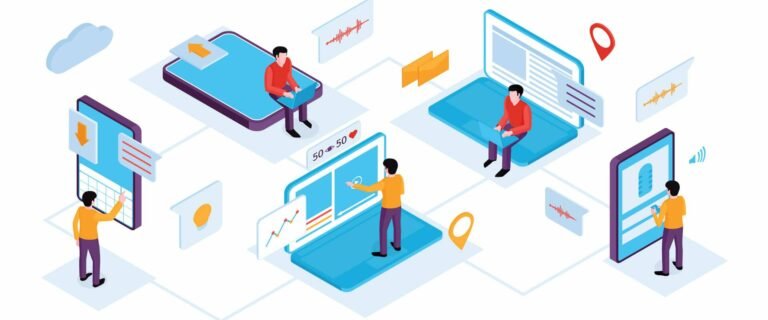Does off-the-shelf learning work?
Off-the-shelf learning, or pre-packaged learning resources that are designed to be used by a wide audience, have often gotten a bad reputation in the field of professional learning. Many people believe that these resources are inherently inferior to custom-designed training programs and that they are less effective at improving skills and knowledge.
They are not entirely wrong. We have seen countless cases where a one-size-fits-all approach fails to meet the needs of learners. While these pre-packaged resources can be effective in certain cases, they are not suitable for all learning situations.
One reason is that these resources are often designed to be one-size-fits-all, and may not take into account the unique needs and goals of individual learners. This can make the learning experience less engaging and relevant and can lead to lower retention and understanding of the material. Off-the-shelf learning resources may not be regularly updated to reflect the latest research and best practices in the field. This can make the material outdated and less valuable to learners.
However, we believe that is a mistake to disregard off-the-shelf learning altogether. In this blog, we will explain why off-the-shelf learning can be effective, and how it can be used to complement custom initiatives.
Advantages of off-the-shelf learning
First of all, off-the-shelf learning has several advantages over custom-designed courseware. It is typically more cost-effective, as the courses are already developed and ready to use. Additionally, they often come with user-friendly interfaces and are easy to access
Off-the-shelf learning also offers more flexibility when it comes to delivery methods – it can be used for self-paced, classroom instruction, or blended approaches. They also offer a wide range of topics and can be used to supplement existing training initiatives with new material.
Finally, many off-the-shelf learning resources are now tailored to the specific needs of learners. This means that they can be customised and adapted to meet the unique requirements of individual learners or organisations. This makes them a powerful and cost-effective way to deliver meaningful training experiences that are relevant and engaging
Using off-the-shelf learning effectively
If you find off-the-shelf training ineffective, you probably aren’t using it in the right way. To get the most out of off-the-shelf learning, organisations should be mindful of how they use it. Here are some tips for making the most of these resources:
Content Curation: When selecting off-the-shelf resources, it is important to choose ones that are relevant and up-to-date. This will ensure that the content is engaging and provide learners with the most current information. Don’t just settle for the first resource you find – make sure it is a good fit for your learners and goals. For instance, if the goal is to improve technical skills, find a resource that provides tutorials and step-by-step instructions. Look for reputed sources with a good track record.
Customisation: Don’t be afraid to modify the off-the-shelf resources so that they are more tailored to your learners’ needs. For instance, add supplemental videos or presentations to provide additional context and explanation. Make sure the content is engaging and relevant by including interactive activities and quizzes. Involve subject matter experts to ensure the accuracy and relevance of the material. At Learnsure AI, we have modified a wide range of off-the-shelf resources to meet the specific needs of our clients. Compared to custom learning development, this has saved our client both time and money – a true win-win situation!
Integration: Off-the-shelf learning should be integrated into existing training initiatives rather than used as a stand-alone resource. This will ensure that learners receive instruction on both theory and practice, giving them a holistic view of the topic. Additionally, integrating off-the-shelf learning with custom-designed courses will create a more interactive and engaging learning environment.
Mentoring: Research suggests that off-the-shelf programs can be effective when the content is suitable for the learner’s needs and when it is supported by coaching or mentoring. Providing learners with support increases engagement and helps them better understand the material. Make sure there are people available who understand the content and can provide guidance as needed. Additionally, consider providing social forums where learners can ask questions and collaborate – this will help create an interactive learning environment and encourage learning.
On-going Evaluation: It is important to regularly evaluate and assess the effectiveness of the off-the-shelf material. Use evaluation metrics such as completion rate, knowledge retention and performance on assessments. This will help you identify areas for improvement and understand what learners find most engaging about the content.
Where to use off-the-shelf training?
There are some scenarios where off-the-shelf training is likely to be the best option.
Generic Learning: If you need to provide general knowledge and skills training, off-the-shelf materials can be useful. For example, if you need to train staff on customer service or sales techniques, an off-the-shelf course would be a good choice.
Compliance Training: Off-the-shelf compliance courses are often the most cost-effective way to ensure that your organisation is up to date with all relevant laws and regulations. You don’t need to build a custom course from scratch – simply select the appropriate off-the-shelf resource.
Soft Skills: Off-the-shelf courses are also a great option for soft skills training such as communication and problem-solving. These courses often include videos, interactive activities and assessments to ensure learners retain the key concepts – all without having to design a custom learning solution
Time-sensitive Training: If you need to provide training quickly, off-the-shelf courses can be a great solution. You can find ready-made content that is already licensed and relevant to the topic. Plus, this type of content is often more affordable than custom development.
High-Volume Training: If you have a large number of learners that need to take the same training, it can be more efficient and cost-effective to use pre-created resources rather than creating custom content from scratch.
In summary, off-the-shelf learning can be an effective way to train your workforce quickly and cost-effectively. However, it is important to select resources carefully, customise them where necessary, integrate them into existing training initiatives, provide support when needed and evaluate their effectiveness on an ongoing basis. With these tips in mind, you can use off-the-shelf materials to provide engaging learning experiences for all of your learners!
Where to avoid off-the-shelf training?
Having said that, there are some situations where off-the-shelf training is not the best option
Organisational Culture: Off-the-shelf courses tend to be generic and one size fits all, so they may not always fit your organisation’s unique culture. If you need to emphasise corporate values or tailor content to specific scenarios, custom development will be more suitable.
Specialised Topics: For specialised topics such as complex technical processes, it is usually better to create custom learning solutions that are tailored to the learners’ needs. In these cases, an instructor-led course is often the more effective option as learners can ask questions and receive feedback in real time. This ensures that all relevant information is included and allows for greater customization of the content
Highly Sensitive Information: When dealing with confidential or sensitive information, it is important to keep data secure. With off-the-shelf content, you cannot always guarantee that the information is secure. In these cases, it is best to create your own custom solution so that you have full control over the data and can ensure its security
In conclusion, while off-the-shelf training can be an effective option in many scenarios, there are some situations where custom development will be more suitable. As with all types of learning solutions, it is important to consider the unique needs of your learners before making a decision on which approach to take. By choosing wisely and evaluating regularly, you can create engaging and effective learning experiences for all of your learners!
Conclusion:
Yes. If used wisely, off-the-shelf learning can be a great option for many organisations looking to provide training quickly and cost-effectively. However, it is important to select resources carefully, customise them where necessary, integrate them into existing training initiatives, provide support when needed and evaluate their effectiveness on an ongoing basis.
In conclusion, off-the-shelf learning can be an effective way to rapidly train employees in compliance issues or soft skills while also saving costs. Additionally, pre-created content often offers more flexibility and customization than creating custom content from scratch. By following the tips outlined in this blog, you can ensure that off-the-shelf resources are used in the most effective way possible. With the right approach, these resources can help organisations save time and money while still delivering quality training experiences to their learners.
At Learnsure AI, we believe in using the right combination of custom and off-the-shelf solutions to create engaging learning experiences that meet your organisation’s unique needs. We specialise in helping organisations make the most of off-the-shelf resources by curating, customising, integrating and supporting them effectively. Contact us today to learn how we can help you get the most out of your off-the-shelf learning!




